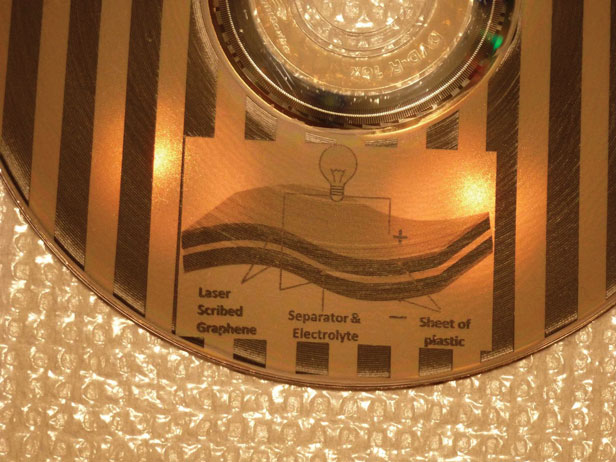Source: “Laser Scribing of High-Performance and Flexible Graphene-Based Electrochemical Capacitors”
Richard B. Kaner et al.
Science 335: 1326–1330
RESULTS: Researchers used an inexpensive process to build high-performance supercapacitors, which are a type of battery. The new devices store five to nine times more energy by weight than conventional supercapacitors and can be charged almost five times faster. They can also be recharged more than 10,000 times without losing storage capacity.
WHY IT MATTERS: The advance might bring down the price of batteries for hybrid and electric vehicles. Much of the bulk and cost of battery packs in these cars arises from measures that are necessary to help them last the life of a car. Supercapacitors are far more rugged, so they don’t require these measures, but conventional ones store too little energy to be practical. The researchers found a way to increase supercapacitors’ energy storage to levels that are useful in hybrid vehicles, and they found a potentially cheap way to make them. Bending the devices doesn’t damage them, so they could be used to power future flexible electronics.
Don’t settle for half the story.
Get paywall-free access to technology news for the here and now.
